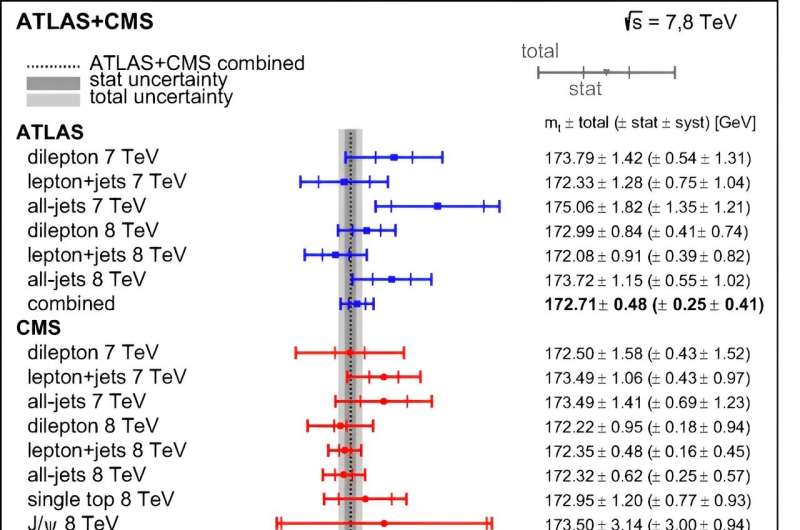This article has been reviewed according to Science X's editorial process and policies. Editors have highlighted the following attributes while ensuring the content's credibility:
fact-checked
peer-reviewed publication
trusted source
proofread
New measurement of the top quark from LHC data

Researchers from the School of Physics & Astronomy have been involved in an important new measurement of the top quark made using data provided by the Large Hadron Collider (LHC).
ATLAS and CMS are general-purpose particle detectors at CERN's LHC in Geneva. Physicists from the University of Glasgow have played key roles in the international ATLAS collaboration for decades.
ATLAS and CMS capture data from particles produced during the high-energy collisions of protons in the LHC. Analysis of the data helps to deepen our understanding of the fundamental nature of matter and the basic forces that shape our universe. One of the particles produced during those collisions, the top quark, is the heaviest known fundamental particle, and one of the most short-lived.
New research from the ATLAS and CMS experiments, published as an Editor's suggestion in Physical Review Letters, has helped scientists measure more precisely than ever before the top quark's mass.
The University of Glasgow's Professor Mark Owen led the contribution of ATLAS to the research, which combines 15 previous measurements to reach its results.
Professor Owen said, "The top quark is fascinating because it has a mass 184 times that of a proton, almost as heavy as a gold atom. Measuring the mass precisely provides crucial information as to whether the Standard Model of particle physics is consistent as energies much higher than the LHC.
"Both ATLAS and CMS have made multiple measurements of the top quark mass and in this new result we used the results from 15 separate measurements to make a new, more precise measurement, of the top quark mass.
"The challenge in the measurement is that while the ATLAS and CMS datasets are independent, the measurements share common sources of systematic uncertainty that must be properly accounted for. This new result accounts for the best understanding of these effects and is a good example of the meticulous work required to understand LHC data, which can go on for many years after the data is collected."
More information: A. Hayrapetyan et al, Combination of Measurements of the Top Quark Mass from Data Collected by the ATLAS and CMS Experiments at √?=7 and 8 TeV, Physical Review Letters (2024). DOI: 10.1103/PhysRevLett.132.261902
Journal information: Physical Review Letters
Provided by University of Glasgow





















